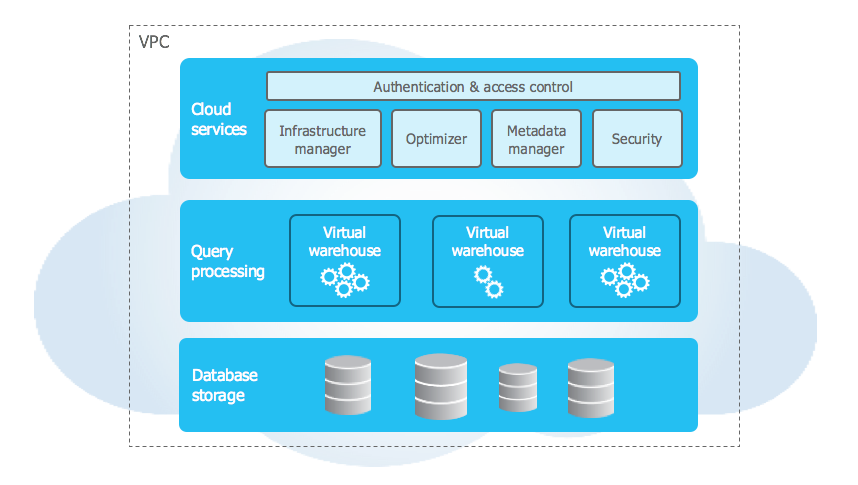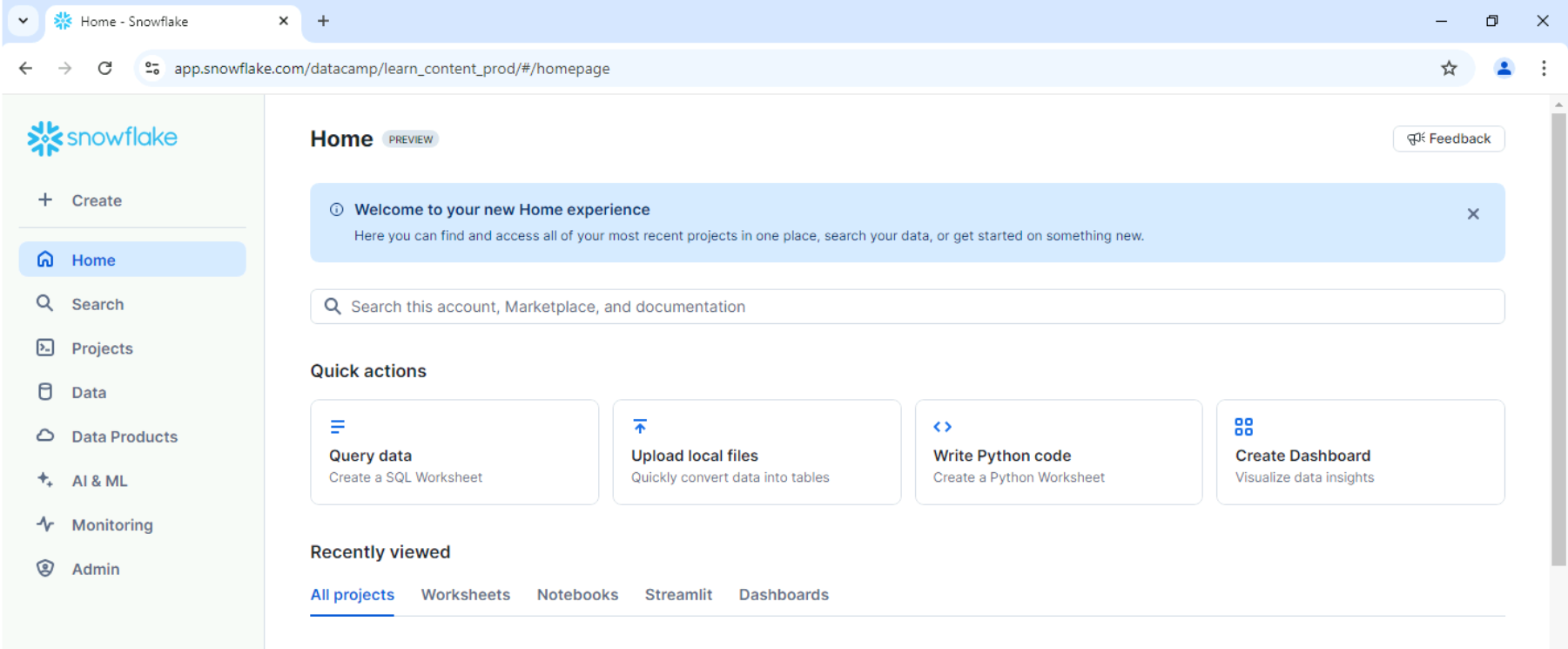Starter Notes
Updated Jan 14, 2022 ·
Overview
Snowflake is a data warehousing platform used by companies for storing and analyzing large datasets.
- A place for storing data for analysis and reporting.
- Data is analyzed using SQL queries.
Snowflake is easy to use and doesn’t require managing hardware or software manually.
- Start using Snowflake right after signing up.
- No setup needed, Snowflake handles infrastructure.
Features
Snowflake has several features to streamline data storage, transformation, and analysis.
- Data Lake integration: Connect with cloud storage services like AWS, GCP, and Azure.
- Data pipelines: Organize, clean, and apply rules to data.
- Data privacy: Ensures "least-privilege access" to sensitive data.
Snowflake's Data Architecture
Snowflake's architecture has three main layers for processing and storing large datasets.
- Cloud Services: Manages access, optimizes queries, and tracks usage.
- Query Processing: Uses virtual warehouses and MPP to process queries.
- Database Storage: Compresses and stores data in a columnar format.

Connecting to Snowflake
There are different ways to connect:
- Web Interface (Snowsight) – A user-friendly UI for running queries
- Worksheets – Interface for executing and managing SQL queries
- Notebooks – Supports both SQL and Python, useful for data pipelines
- Drivers – ODBC and JDBC allow external applications to connect
- SnowSQL – Command-line tool for direct database access
Snowsight UI
Snowsight is a UI tool for interacting with Snowflake, primarily used for data analysis.

Marketplace
Snowsight includes a marketplace for datasets that can be used for analysis.
- Free and paid datasets from Snowflake providers.
- Helps bring in external data to enhance insights.
